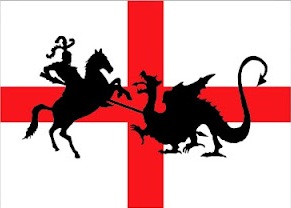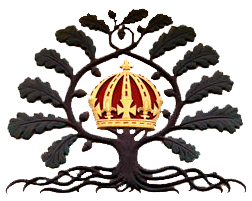"Orthodox" Hoplophobes
 Embryo Parson Posted on
Embryo Parson Posted on  Monday, August 5, 2019 at 08:48PM
Monday, August 5, 2019 at 08:48PM So, the manifestly left-wing "Public Orthodoxy" publishes this in response to the latest spate of gun violence: The Byzantine Origins of Gun Control. A representative jewel from this specious apology for disarming the American citizenry:
It would be difficult to overstate the significance of the Byzantine emperor Justinian for both Christian and political history because, more than any previous Christian ruler, he integrated Christian precepts into imperial legislation. Whether one looks favorably upon the Byzantine model of Church/State “symphonia” or prefers a Jeffersonian separation of Church and State, every modern formulation of Christianity in politics is, in one way or another, a response to Justinian’s legacy. Even the current debate on gun control was anticipated by a Justinianic law preventing citizens from owning weapons.
Justinian’s Novella 85 strictly forbade the sale of weapons to citizens. Only small knives and domestic axes were exempted from the regulation. The ancient Romans had previously forbidden the possession of weapons by citizens within urban areas, but the preface to Novella 85 highlights an explicitly Christian orientation in the formulation of the new and more comprehensive law.
Novella 85 begins: “Calling upon the great God and Jesus Christ, our Savior, and invoking His aid, we strive to keep our subjects, whom God has given to us to govern, from all damage and harm, and prohibit fights, which, undertaken through thoughtlessness, end in slaughter, and bring double penalty—that which the combatants bring upon themselves and that which the law visits upon them for their madness.”
Put simply, Justinian believes that it is his God-appointed responsibility to protect the welfare of citizens. He further believes that he can best ensure the welfare of citizens by criminalizing the sale of weapons to citizens. Novella 85 remained in effect for the final 900 years of the Byzantine empire.
Predictably, its author, George Demacopoulos, "the Fr. John Meyendorff and Patterson Family Chair of Orthodox Christian Studies and Co-Director of the Orthodox Christian Studies Center at Fordham University", leaves out important historical data about pertinent Byzantine law, which I cited in a 1997 Maryland Law Review article I co-authored with David Kopel entitled Communitarians, Neorepublicans and Guns: Assessing the Case for Firearms Prohibition:
[405] In an effort to end the practice of relying on foreign mercenaries, the Byzantine Emperor Maurice handed down the following directive circa 579 A.D.: "We wish that every young Roman [subject of Byzantium] of free condition should learn the use of the bow, and be constantly provided with that weapon and with two javelins." (Strategikon, reprinted in I The Art of... War in the Middle Ages 178-79 (C. Oman trans., 1924), cited in Deno John Geanakoplos, Byzantium: Church, Society, and Civilization Seen Through Contemporary Eyes98 (1984)).
In the ninth century, Emperor Leo VI urged, in essence, the creation of a popular militia skilled in guerrilla warfare:
We therefore wish that those who dwell in castle, countryside, or town, in short, every one of our subjects, should have a bow of his own. Or if this be impossible, let every household keep a bow and forty arrows, and let practice be made with them in shooting both in the open and in broken ground and in defiles and woods. For if there come a sudden incursion of enemies into the bowels of the land, men using archery from rocky ground or in defiles or in forest paths can do the invader much harm; for the enemy dislikes having to keep sending out detachments to drive them off, and will dread to scatter far abroad after plunder, so that much territory can thus be kept unharmed, since the enemy will not desire to be engaging in a perpetual archery skirmish. (Tactica, reprinted in I The Art of War in the Middle Ages 179 (C. Oman trans., 1924), cited inDeno John Geanakoplos, Byzantium: Church, Society, and Civilization Seen Through Contemporary Eyes 98-99 (1984)).
This footnote occurs in a section of our article that sets forth how the right to keep and bear arms came to be enshrined constitutionally and which was historically connected both with the right of self-defense and the duty to defend one's homeland against invaders and tyrants (or "enemies foreign and domestic", as our Oath of Allegience names them):
The Origins of the Second Amendment
The right to keep and bear arms in America is rooted in both English common law and the philosophy of natural law that the Framers viewed as superior to the common law. Historian Robert Shalhope observes that the Framers drew upon state constitutions setting forth rights rooted in nature as well as in the traditional rights of Englishmen as sources for the content of a national bill of rights.[401] Shalhope writes:
[T]hese sources continually reiterated four beliefs relative to the issues eventually incorporated into the Second Amendment: the right of the individual to possess arms [for self-defense], the fear of a professional army, the reliance on militias controlled by the individual states, and the subordination of the military to civilian control.[402](p.517)
The right to self-defense (and the corresponding right to arms) has long been considered a natural right in the political traditions of Western culture[403] and was affirmed to be one of the rights of Englishmen under the 1689 British Constitution.[404]
Not only is there a long-standing right to self-defense at common law, but the widespread belief in the duty of an individual arms-bearer's participation in the common defense dates back beyond the Middle Ages.[405] Prior to the Norman Conquest, citizens of England (p.518)were legally obligated to keep and bear privately owned arms to ensure their preparation in the event that they were called upon to defend their country.[406] Freemen in England served in the "fyrd," a people's militia whose duty it was to defend against invasion, to suppress insurrections, and to perform citizens' arrests.[407] Later, "assizes of arms" were required by English kings.[408] The Assize of Arms of Henry II,[409] issued in 1181, required the whole body of freemen to possess arms.[410] Subsequent assizes expanded the responsibilities of the populace in keeping and bearing their arms for defense against criminals and invaders.[411] This state of affairs rendered a standing army unnecessary for national defense.[412]
The right of resistance also became a component of the right to keep and bear arms in England. In the thirteenth century, the tyranny of King John led to the revolt of his subjects, culminating in the obtrusion of the Magna Carta upon him for his signature.[413] Although the Magna Carta was first won in the battle of Runnymeade, it repeatedly had to be defended with force, as did lesser-known reforms, such as the Provisions of Oxford (1258), which were also reluctantly signed by a king who was confronted with armed force.[414] The first of these rebellions, rebellions that eventually included two full-scale civil wars, began only a few months after the Magna Carta was signed.[415] In 1264 Simon de Montfort led an uprising, known as the Baron's War, against John's son, King Henry III.[416] The uprising involved (p.519)not only knights in armor but also commoners bringing their own weapons to battle.[417] After initial victory, the uprising was eventually defeated.[418] The losers nevertheless carried on resistance from sanctuaries in forests, fens, and castles.[419] The Magna Carta and other reforms, such as the Provisions of Westminster, were finally accepted as binding upon a monarchy which acknowledged that the king himself was subject to the rule of law.[420] Because the people of Wales and Scotland often engaged in armed resistance to the English military, they maintained substantially more autonomy than they would otherwise have enjoyed.[421]
Thomas Jefferson's dictum--"the tree of liberty must be refreshed from time to time with the blood of patriots & tyrants"[422] could be a rough summary of the violent history of medieval England. As Stuart Hays observes: "Thus the right of lawful revolution was born into the constitutional law of England. This is of major import because without the right to revolt there is less reason to preserve the right to bear arms."[423] Great Britain also saw numerous instances of guerrilla or revolutionary uprisings against invading foreign armies, including the guerrilla war of "Wiliken of the Weald" against French invaders in southern England,[424] and the revolt led by William Wallace of Scotland, which, in the long run, secured independence for Scotland against the claims of English monarchs.[425]
Incipient theories of political resistance were advanced by medieval theologians such as Manegold of Lautenbach.[426] The libertarianism of Manegold and others was further shaped during the Protestant (p.520)Reformation by both Lutherans and Calvinists, but especially by the latter. This new "liberation theology" was to undergo a process of refinement during the following centuries, culminating in the English Civil War, the political philosophy of John Locke (on which the Declaration of Independence was later to be largely based), the Glorious Revolution of 1688, and, finally, the American Revolution.[427] The provision regarding the right to keep and bear arms in the Declaration of Rights that issued from the Glorious Revolution is the immediate forebear of the Second Amendment to the United States Constitution.[428] It was the British government's attempt to seize arms that sparked violent resistance and the beginning of the American Revolution, not only at Lexington and Concord,[429] but also in Virginia.[430]
As can be concluded from our summary, Demacopoulos' assertion that the right to keep and bear arms is "distinctively modern and highly secular" is unadulterated nonsense. Its roots stem back even to St. Augustine, who wrote that an unjust law is no law at all, laying the ground for the permissability of righteous resistance against such laws, which in turn means that the people must have the appropriate tools of resistance. Medieval moral theologians simply expanded on it, and in the Orthodox East armed Christians foreceably resisted and in some cases threw off Muslim, Nazi and Communist yokes in accordance with this principle.
Sadly, however, the lefty "Orthodox" Brahmins who write for Public Orthodoxy seem to specialize in unadulterated nonsense driven by their left-wing ideology and, increasingly, all the apostasy that naturally goes along with it. Accordingly, I warn all Orthodox Christians of good faith to steer clear of that faithless and pseudo-scholarly rag.





Reader Comments